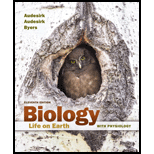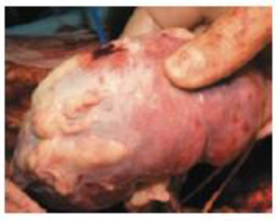
Concept explainers
Since the 1950s, when living kidney donation was first recognized as a viable alternative to cadaver organ donors, family and friends have come forward to offer a kidney to a victim of kidney failure. To reduce the chance that the recipient’s immune system will attack the donated kidney as if it were an invading microbe or
To remove a donor kidney (FIG. 36-9), surgeons generally use a technique called laparoscopic surgery, where they make half-inch incisions through which they insert surgical tools, including a tiny video camera to guide the operation. The kidney is extracted through an incision about 2½ inches long, put on ice, and rushed to its recipient. The operation takes 3 to 4 hours; donors remain in the hospital for about 3 days and return to work in about 3 weeks. In addition to the risks associated with major surgery, kidney donors will lack a backup kidney in the unlikely event that their remaining kidney fails. But a recent study of deaths among 80,000 kidney donors during a 15-year period found no greater mortality among this group (once they had recovered from their surgery) than among non-donors.

FIGURE 36-9 Surgeons transplant a kidney
Domino donations are almost always started spontaneously by someone inspired to make a difference. Since 2008, when DeGiulio’s donated kidney started a chain that saved four lives (FIG. 36-10), such domino donation chains have become longer and more frequent. For example, during a 4-month period, 17 hospitals in 11 states from California to New Jersey matched 30 people—who might otherwise have died—with kidneys from 30 donors they had never met. This heroic enterprise was started by Good Samaritan Rick Ruzzamenti, who got the idea from the desk clerk at his yoga studio, who had mentioned to him that she had donated a kidney to a friend. “People think it’s so odd that I’m donating a kidney,” he told the transplant coordinator at his hospital, but “I think it’s so odd that they think it’s so odd. . . . It causes a shift in the world.”

FIGURE 36-10 Domino donations Kidneys from compatible strangers saved the lives of these four recipients.
The more than 100,000 eligible individuals awaiting a kidney transplant ardently hope that domino donation chains continue to be forged and to lengthen.
CONSIDER THIS Would you donate a kidney to a friend or family member whose kidneys were failing? Would you consider donating a kidney to a stranger? Explain your reasoning.
Want to see the full answer?
Check out a sample textbook solution
Chapter 36 Solutions
Biology: Life on Earth with Physiology Plus Mastering Biology with Pearson eText -- Access Card Package (11th Edition)
- What is an agglutination response? How can it be avoided when blood is transfused?arrow_forwardWhy does the "rule of three" not applicable to non-normocytic and non-normochromic red blood cells?arrow_forwardWhat are the causes of thrombophilia? Describe the laboratory tests that are used to confirm the molecular cause of the condition in a patient.arrow_forward
- The individual whose typed blood results looks like the image below, may safely donate their blood to which of the following blood types? Choose from the following: (A) A+ and O+ (B) A- and O- (C) A+ and AB+ (D) A- and AB- (E) B+ and O+ (F) B- and O- (G) B+ and AB+ (H) B- and AB- (I) AB+ only (J) AB- only (K) O+ only (L) O- onlyarrow_forwardAn individual demonstrates antibodies (A) and antibodies (B) in their blood. Their blood type would be which of the following? (A) AB+ (B) AB- (C) AB ? (presence/absence of Rh factor undetermined) (D) O+ (E) O- (F) O ? (presence/absence of Rh factor undetermined)arrow_forwardMs. Wu, whose blood type is O-, requires a blood transfusion.Her family members volunteer to donate blood. Their blood types are as follows: her son, type B-; her husband, type B+; her daughter, type O+. Which family members could safely donate blood to Ms. Wu? Who could not? Explain.arrow_forward
- A patient in Emergency Room needed blood transfusion as he was experiencing an intensive loss of blood due to severe trauma related to car crash. His blood type is A+, and he was transfused with 250 ml of blood type O-. Is there any concern that this patient should be monitored for?arrow_forwardI don't know this answer.arrow_forward66) A 68-year old man has a 1-month history of hemoptysis and weakness. He has smoked 2 packs of cigarettes per day for 50 years. Eyelid ptosis is present bilaterally. Muscle testing shows increasing strength during several seconds of effort. An X-ray of the chest shows a mass on the left upper lobe of the lungs . Antibodies are most likely to cross-react between the mass and which of the following? (A) Muscle mitochondria (B) Myofilaments (C) Na+ - K+ pump (D) Synaptic Ca2+ channels (E) Thyroid-stimulating hormone receptorsarrow_forward
- A patient requires a blood transfusion after experiencing blood loss due to a traumatic injury. The patient's record lists their blood type as B+, Out of the following available options in the blood bank, what is the best type of donor blood to give to this patient? O Type A blood with antibodies removed via centrifugation O Type O- blood with antibodies removed via centrifugation Type AB+ blood with antibodies removed via centrifugation O Type O- whole bloodarrow_forwardIt was found empirically that Bill would stay healthy and have no significant infections if his IgG level were maintained at 600 mg/dl of plasma. He was prescribed 10g of gamma globulin every week to maintain that level. How was the dose calculated? (Explain what considerations went into determining this dose regimen)arrow_forwardA person with type A+ blood gets a transfusion with type O- blood. What is most likely to happen to the recipient? A) The recipient's blood will agglutinate (clump) due to the presence of natural antibodies in the recipient's blood. B) Nothing because the donor's blood is compatible with the recipient's blood. C) The recipient's blood will agglutinate (clump) due to the presence of natural antigens on the recipient's blood cells.arrow_forward
 Human Physiology: From Cells to Systems (MindTap ...BiologyISBN:9781285866932Author:Lauralee SherwoodPublisher:Cengage Learning
Human Physiology: From Cells to Systems (MindTap ...BiologyISBN:9781285866932Author:Lauralee SherwoodPublisher:Cengage Learning Human Biology (MindTap Course List)BiologyISBN:9781305112100Author:Cecie Starr, Beverly McMillanPublisher:Cengage Learning
Human Biology (MindTap Course List)BiologyISBN:9781305112100Author:Cecie Starr, Beverly McMillanPublisher:Cengage Learning


